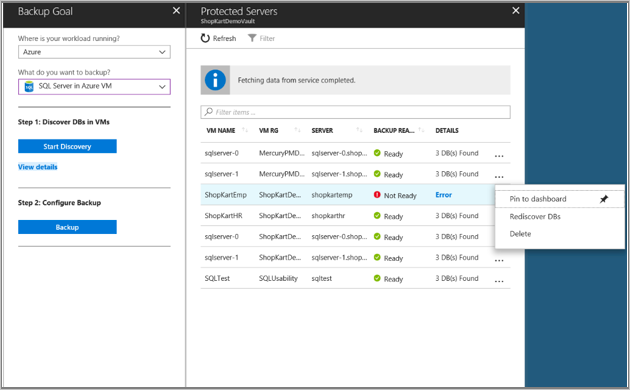

- #Multiple idatabase instances windsor registration how to#
- #Multiple idatabase instances windsor registration full#
Will you need to replicate your data off for reporting purposes (best practice is to not let reporting queries run against your OLTP database (yes, there are exceptions to this))?. VM, Spinning disks or solid state, if VM how many cores are you willing to pay for (licensing question). What does your infrastructure look like?. What version of SQL best fits my needs for this project?. #Multiple idatabase instances windsor registration how to#
These are important when you are deciding how to move forward on a project. I agree it does depend, but there are some questions that is not asking.

I have written a sort of similar answer Which is better: one database per application, or just one database? Problem isolation will be difficult if you have one server serving all your dbs.So imagine all your dbs being on the same server might be a bottleneck. Having dbs spread out depending on the criticality will alleviate that problem. Even with AGs, you have a fix amount of worker threads and they get shared with all your dbs on a single server.An external issue with OS affects all your estate being in one place.If there is an issue with your server and that job fails midway, other dbs will be impacted except you have inbuilt mechanism to detect and fix the issue and continue with the rest.
#Multiple idatabase instances windsor registration full#
You have one solution for a given server hosting all your dbs to do backups - full and log, integrity checks, index maintenance. In 2014 and up, you can limit IOPS using Resource Governor. It only governs "working memory of a query e.g. Even if you have Resource Governor enabled, it does not govern buffer pool. Isolate your risk as much as possible but that will cost you additional licensing and maintenance overhead which you have by saying - ample resourcing and budget. An issue with a single DB puts all your other DBs at risk. Putting all 5 dbs on one server will be a single point of failure. This way, you dont put all your eggs in the same basket. I would say, club the dbs depending on the criticality and uptime SLAs and then distribute them between 2-3 servers (VM would be another option as well). This means that the dbs are decoupled or independent. None of the multiple databases relate or utilize cross database joins. Being in the business of client hosting, I have faced this situation and below is my view point : Sit down with your stake holders and present then the pros and cons of the 2 options.






 0 kommentar(er)
0 kommentar(er)
